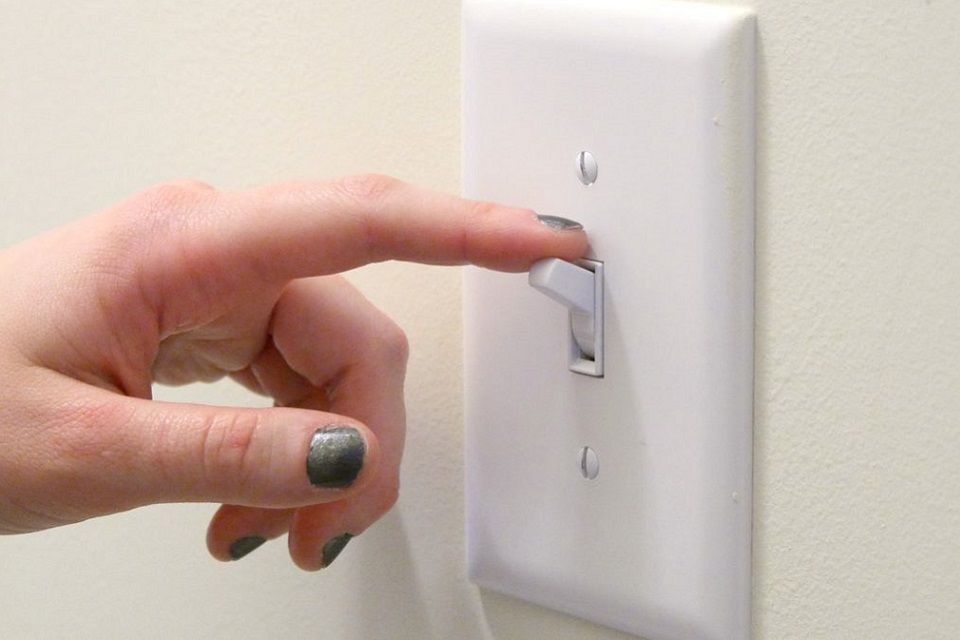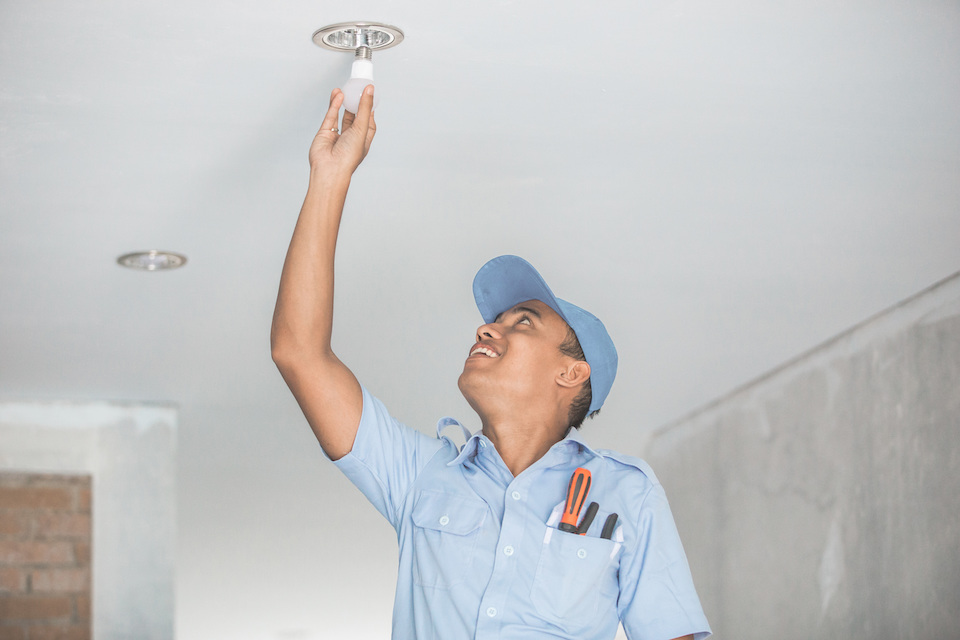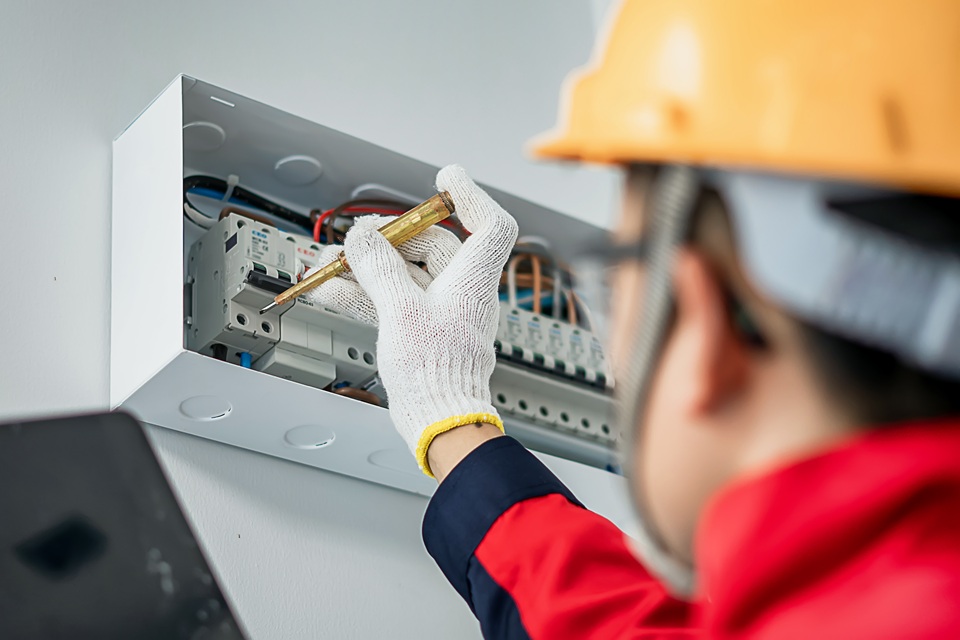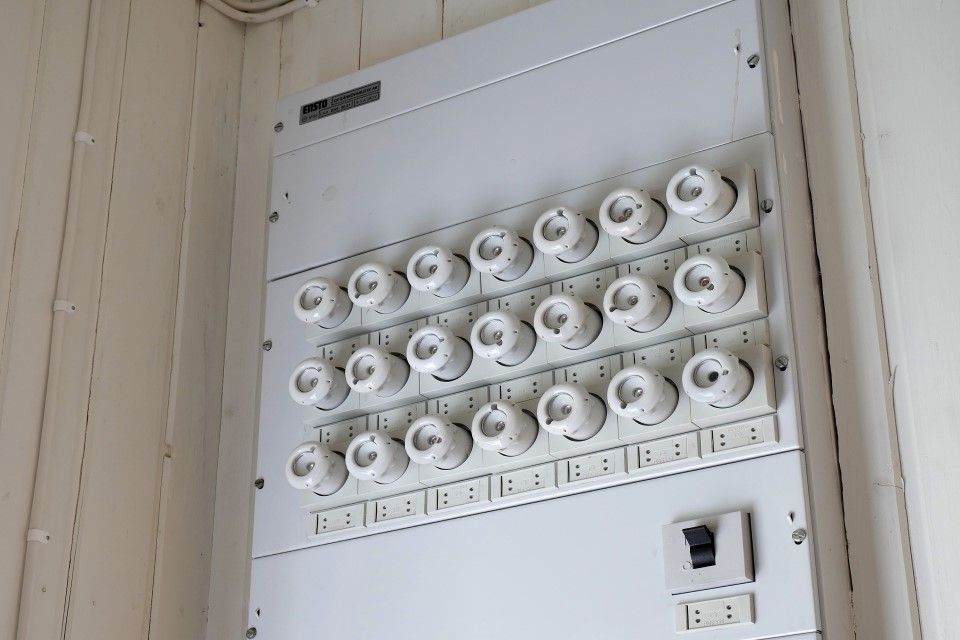Lights Switch Problems
A faulty light switch can be a real annoyance around the house or at the office, and it often seems like too much of a minor job to bother with calling out an electrician. This means people sometimes ignore the problem and instead, learn to live with their broken light switch.
However, a faulty light switch can be troubleshot quite easily, enabling you to determine the cause of the problem and the steps you need to take to fix it. This article provides a complete guide to faulty light switches and how you can determine the faults and decide on how best to proceed with a repair. It’s ideal for anyone that owns a home or runs an office, and it could save you a lot of time, money and effort in the long run.
Circuit Breaker Trip
Electrical systems in every house and office will feature a complex system of circuits that are protected and managed by a series of circuit breakers or fuses, or both. Circuit breakers are the most commonly used electric protection, but older homes may still use fuse systems.
The base for these systems is located in your main service panel, which is a series of flick switches with ON-OFF labels on them. You probably already know where yours is located, but if not, look in cabinets or cupboards, and they’re pretty easy to find. If your service panel consists of a series of small glass cylinders, your house runs on a fuse system, but as we say, these houses are growing fewer every day.

These circuit breakers are designed to automatically shut off power to a specific outlet when a problem has occurred, resulting in a ‘trip’. You will most likely have experienced this at one point or another when you switch a light on, and a trip occurs, leaving you in darkness and with a blown bulb.
The easy fix for a circuit breaker trip is to simply flick the switch back to the ON position and, in this example, replace the bulb.
Now, if you’re experiencing circuit breaker trips each time you flick the light switch on, there could be a few causes. We break them down below:
- Loose Wiring – The wiring in old or poorly constructed systems can often cause circuit trip problems. This could be in the form of grounds or short circuits where live wires touch each other and causes a trip. To investigate this, follow these steps:
- Turn off the power to the switch at the main service panel
- Remove the light switch
- Check each terminal screw to ensure tightness
- Ensure all wiring is covered in electrical tape and isn’t too loose
- Ensure no wires are touching each other
- Inspect insulation for any deterioration
- Bad Switches – You can never rule out the possibility that you unfortunately ended up with a bad switch. Bad switches have wiring that has deteriorated causing circuit overloads leading to trips. The next section will delve into bad switches in more details and will give you a detailed step-by-step guide on how to change a bad switch.
Circuit breaker troubleshooting and repair can easily be done by anyone willing to engage in some DIY. It doesn’t require specialist tools and is extremely safe if the guide is followed. However, if you feel uncomfortable attempting this, a trained electrician will be able to help.
Damaged Light Switch Mechanism
In the last point, we touched on broken light switches and mechanisms causing circuit trip issues. However, a faulty light switch mechanism can cause problems other than trips and sometimes its difficult to determine exactly where the problem is.

So, if your light switch will not turn on or off despite how many times you flick, turn or press your light switch, or you notice that the toggle or switch head moves or doesn’t stay in its place, it’s fair to deduce that the switch is faulty and will need to be replaced.
If you have no confidence or experience in DIY, then it may be best to ask a family member or electrician for help completing this job. However, it isn’t a difficult task, and if you follow the instructions, you are at no risk or injury. Here’s how to change a light switch:
- Turn off the power to the switch at the main service panel or if you’re unsure if you have flicked the correct one off, turn the big red switch to cut all power
- Remove the light switch from the wall and take a picture of the wiring for when you reattach the new one
- Unscrew the small screws from the back of the light switch to release the wires
- Now, reverse the method you took to unscrew the light switch by reattaching the wires in the same configuration as your picture, tighten the small screws and reattach to the wall
- Flick the power back on at the main service panel and test the light switch
Again, this type of DIY requires only basic tools and ensuring the power is turned off from the outlet will avoid injury. But, if you don’t feel safe of comfortable call in a professional, we discuss the prices associated with electricians later on in this guide.
Flickering Lights
Flickering lights can be a very irritating problem, especially in a living room or bedroom where it’s extremely noticeable. The cause of this problem could be any of a few things, but luckily it's easy to troubleshoot and repair.
Firstly, think about the types of bulb you have installed as LED, and fluorescent lights flicker by their very nature, and it doesn’t mean there is an issue, more it may indicate that the bulb is nearing the end of its life and is ready to be replaced. If you do have either of these lightbulbs installed, swap them for a common household bulb to see if this fixes your problems.

You can also check the actual bulb in the light socket to check it hasn’t been screwed in incorrectly or too loosely. A common cause of flickering lights is a loose connection and can be easily fixed by either a better fitting bulb or simply twisting the bulb in further.
Similarly, to the issue with the circuit breaker trips, if your light switch has loose wiring inside that can cause flickering and intermittent lighting, especially if the wiring has started to deteriorate.
If your wiring does need replacing fully, that would be a job for a trained professional not to be done yourself.
The troubleshooting for a flickering light can be done yourself, and the majority of repairs can be done yourself as well. However, always remember to switch the power off at the main control panel first to avoid electrocution and injury. If the wiring looks too old and damaged to be used further, call in an electrician to take a look as that is not something that should be attempted by someone without the correct experience and skill.
Buzzing and Warm Light Switches
A warm light switch or a buzzing light switch or fixing can be a sign of a significant issue in your electrics and must be investigated as soon as possible to avoid the problem worsening or accidents occurring. We’ve provided a small list below for each of the issues and what they may mean:
Also, if your boiler system has some radiators, the first thing to do is to bleed them. This can be done by locating the radiator bleed valve and carefully turning it anti-clockwise until water starts to spill out. Doing this will allow trapped air to be released and let hot water into the cold fins. Sometimes, bleeding the radiators does not work; in this case, it is advised to call an expert.
Light Fixture Humming or Buzzing
If your light fixture is humming or buzzing it is most likely being caused by a loose wire or an issue with the bulb. Some light bulbs contain ballast that actually vibrates and that serves as an indication that it is ready to be replaced. Once you replace the bulb, listen to see if that has stopped the buzzing, if it hasn’t, it’s probably time to contact an electrician for further investigation and advice on a repair.
Light Switch Humming or Buzzing
This issue is most likely caused by a loose wire, a bad switch, incorrectly grounded wires or too much load on the wires. All of these issues actually carry a pretty high chance of resulting in a fire, so it’s extremely important to contact an electrician as soon as the issues are detected. We advise you to not to attempt fixing this yourself despite any other electrics DIY you have completed.

Circuit Breaker Humming or Buzzing
A buzzing or humming sound emanating from your circuit breaker is a real cause for concern. The most common cause of this issue is an overloaded circuit board which is a big fire hazard. As with the previous section, you should call an electrician as soon as possible and not try to fix or investigate the issue yourself. To keep yourself and your home safe, switch the power off at the red switch and wait for the electrician to arrive.
A humming or buzzing sound coming from any electric device that is different to a fan or motor is a cause for concern and if ignored, can easily result in fires. Be vigilant in the face of these issues and don’t hesitate to call out an electrician.
Electricians Fees
As with any service, trade and industry, prices vary depending on where you are located, the complexity of the job, the time it will take and how quickly you need them to attend your fault. However, we’ve put together a guide to give you estimated figures for what it will cost to have an electrician call out to your home, investigate and repair an issue you have.
In the UK you are likely to pay around £45 per hour for an electrician on basic rates or £350 for a full day. There are also call out fees related to this, which is usually prices at double their hourly rate but includes an hour’s labour. So, if you called out an electrician for a job that only takes an hour and their hourly rate is £45, you would be £90 for that job, plus any materials that are required.

Now, for an electrician to repair a light switch, it all depends on what the issue is. If you simply have a bad switch that needs repairing, that can be done for around £35-£55. However, if the issue your experiencing is due to wiring that needs to be replaced, you could be looking at double or triple that depending on the size of the job.
If you’re calling out an electrician as a matter of an emergency, you’ll need to pay an additional emergency call-out fee. In the UK this is typically around £75 on top of the hourly rate. It’s often a small price to pay to get someone out in a hurry, especially if there are safety concerns. Electrical emergencies are generally considered those faults and issues that either poses a concern to the safety of the household, this doesn’t have to be a fire threat, but even being left without lights at night.
FAQs
Q: What does 1 and 2 mean on a light switch?
A: The 1 and 2 refers to the technical term of Gangs. A simple light switch with only 1 button on it is reoffered to as a 1 Gang switch meaning it controls only a single lighting function. A 2 Gang has two buttons and controls 2 lighting functions.
Q: What is a 2-Way light switch?
A: A 2-Way switch means having a two or more switches located in different places that control one light. You’ll often find these types of switches in hallways so you can turn a main light on from upstairs or downstairs without having to run up and down the stairs each time. They are also useful in the bedroom so you can switch the main light on and off without getting out of bed.
Q: What light switch do I need?
A: You’ll most probably need different light switches in different areas of your house. Simple 1 Gang switches will be fine for most functions but there are other options for different requirements. For example, you may want to install a dimmer switch in your living room for that cinema effect, or maybe you need a 2-way switch for your hallway. The best thing to do is to consider what functions you want your lighting systems to have and then match them up with available switches on the market.
Q: How much would a consumer unit upgrade cost?
A: If you’re looking to upgrade your consumer unit to a newer version, you’re likely to be looking at around £500 including materials and certificate. It’s actually quite a small price to pay for a reliable and safe unit if you have any worries about your own.
Q: Is there somewhere to check if an electrician is licensed?
A: If you visit http://www.electricalcompetentperson.co.uk/, you can check the legitimacy of tradesmen before you commit to using their services.
Sources
- https://www.thespruce.com/light-switch-breaker-overloads-4132428
- http://www.lightwiring.co.uk/lighting-circuit-components/light-switches/gangs-and-their-ways
- https://www.rosebrotherselectric.com/electric-noise-or-humming-when-to-call-an-electrician
- https://blog.1000bulbs.com/home/flickering-lights-and-when-you-need-to-worry
- http://www.judgeelectrical.co.uk/domestic-electrical/lighting/light-switch-problems.html
- https://www.diy.com/ideas-advice/how-to-replace-a-light-switch/CC_npcart_400249.art







